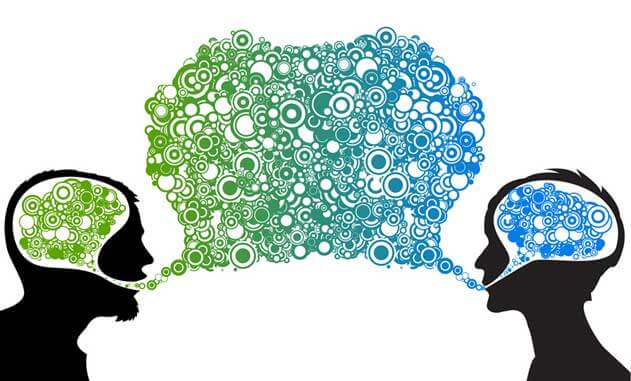Humans may speak a universal language, say scientists
humans may speak a universal language,
say scientists
Sarah Knapton,
TELEGRAPH science editor
12 SEPTEMBER 2016 • 8:00PM
Humans across the globe may be actually speaking the same language after scientists found that the sounds used to make the words of common objects and ideas are strikingly similar.
The discovery challenges the fundamental principles of linguistics, which state that languages grow up independently of each other, with no intrinsic meaning in the noises which form words.
But research which looked into several thousand languages showed that for basic concepts, such as body parts, family relationships or aspects of the natural world, there are common sounds – as if concepts that are important to the human experience somehow trigger universal verbalisations.
“These sound symbolic patterns show up again and again across the world, independent of the geographical dispersal of humans and independent of language lineage,” said Dr Morten Christiansen, professor of psychology and director of Cornell’s Cognitive Neuroscience Lab in the US where the study was carried out.
“There does seem to be something about the human condition that leads to these patterns. We don’t know what it is, but we know it’s there.”
The study found, that in most languages, the word for ‘nose’ is likely to include the sounds ‘neh’ or the ‘oo’ sound, as in ‘ooze.’ Similarly, the word for ‘leaf’ is likely to include the sounds ‘l,’ ‘p’ or ‘b’ while ‘sand’ will probably use the sound ‘s’. The words for ‘red’ and ‘round’ are likely to include the ‘r’ sound.
“It doesn’t mean all words have these sounds, but the relationship is much stronger than we’d expect by chance,” added Dr Christiansen. Other words found to contain similar sounds across thousands of languages include ‘bite’, ‘dog’, ‘fish’, ‘skin’, ‘star’ and ‘water’. The associations were particularly strong for words that described body parts, like ‘knee’, ‘bone’ and ‘breasts.’
The team also found certain words are likely to avoid certain sounds. This was especially true for pronouns. For example, words for ‘I’ are unlikely to include sounds involving u, p, b, t, s, r and l. ‘You’ is unlikely to include sounds involving u, o, p, t, d, q, s, r and l.
The team, which included of physicists, linguists and computer scientists from the US, Argentina, Germany, the Netherlands and Switzerland analysed 40-100 basic vocabulary words in around 3,700 languages – approximately 62 per cent of the world’s current languages.
The researchers don’t know why humans tend to use the same sounds across languages to describe basic objects and ideas. But Dr Christian said the concepts were important in all languages, and children are likely to learn these words early in life.
“Perhaps these signals help nudge kids into acquiring language,” he added: “Maybe it has something to do with the human mind or brain, our ways of interacting, or signals we use when we learn or process language. That’s a key question for future research.”

Figura 1: Spiky objects tend to have ‘kiki’ sounds – Credit: Christmasstockimages
One of the most basic concepts in linguistics is that the relationship between a sound of a word and its meaning is arbitrary. However recent studies have suggested that some words may share common sounds, for example, researchers have shown that words for small spiky objects in a variety of languages are likely to contain high-pitched sounds, while rounder shapes contain ‘ooo’ sounds, which is known as the ‘bouba/kiki’ effect.
Dr Lynne Cahill, a lecturer in English Language and Linguistics at the University of Sussex said it was possible that some words were similar across languages because they are the first noises children make. So the ‘ma, ma, ma’ and ‘da, da, da’ sounds made be babies became mama and daddy.
But she said it was too early to say there was a universal root for other words.
“You could argue that the words chosen here are very old and therefore most likely to have a common ancestor language in the past, from which they all derived,” she said.
“I think this is an interesting study which has looked at so many languages but I don’t think it quite justifies their claim that it debunks the idea that language is arbitrary and I think they looked at too few words to make any firm conclusions.”
The research was published in the Proceedings of the National Academy of Sciences journal.
Nose, Nase, Nez: Shared Sounds and Meaning Link World Languages
By Nathaniel Scharping | September 13, 2016 4:59 pm

(Credit: Petr Vaclavek/Shutterstock)
In English we say “nose”, the French say “nez” and Germans pronounce it “nase.” The words that different cultures use to describe the same objects or concepts might be more similar than we realize.
That’s the conclusion of a statistical analysis of thousands of languages, which concluded that some of the most basic words in our vocabularies share important characteristics, no matter the language being spoken.
The findings contradict a basic assumption in linguistics: that the origin of our words is largely arbitrary. There are exceptions to this rule of course, but by and large, it is commonly held that the meaning of a word has no bearing on the sounds which form it.
By proving otherwise, the researchers raise intriguing questions about the ontological roots of language, and suggest that some shared features of our brains had a hand in shaping the development of language.
words upon words
In their paper, published Tuesday in the Proceedings of the National Academy of Sciences, researchers from Germany and Switzerland examined two-thirds of the more than 6,000 languages we know about today. They compiled 6,452 lists of the most basic words that languages share, words like pronouns, motion verbs, and nouns for natural phenomena and body parts. They then broke the words down into symbols representing specific sounds, which they were able to feed into an algorithm to tease out the commonalities between them.
The researchers were looking for sounds that showed up in words describing the same things. If there were truly no connection between vocalizations and meaning, the sounds should be evenly distributed. That wasn’t the case though — they found 74 words that showed a correlation between the sounds they used and what they meant. This held even if the languages came from completely different lineages, meaning that they never borrowed from each other.
These correlations were both positive and negative, meaning that some words shared sounds, while others all seemed to shy away from certain sounds. Some words turned out to have both. Take “tongue” for example: Across all the languages, the sounds for “e” and “l” show up more often, while “u” and “k” appear less frequently than would be expected.
Both “red” and “round” show an affinity for “r”, while “name” rarely possesses “o” and “p”.
An image from the study showing words that have either positive or negative associations with specific sounds.(Credit: Damián E. Blasi et. al)
does it make sense?
On the surface, it makes sense that some of our words sound the same. After all, we’re all human, and wherever our languages came from, they spring from brains that work largely alike.
On the other hand, these findings may seem to be partly counterintuitive — after all, there are plenty of words that sound the same but mean very different things across languages. In addition, some of the researchers conclusions don’t seem to jive with our own language — take for example, their finding that the word for “you” doesn’t often possess “o” or “u” sounds.
It’s important to remember, however, that the researchers found correlations on a very broad scale. On the scale of thousands of languages, English is just a drop in the bucket. The researchers don’t lay out hard and fast rules for languages — instead, they find that a good number of sounds show up in a way that shouldn’t happen randomly.
but why?
They don’t know exactly why this happens. The roots of language far exceed any written documents, and archaeological finds don’t often provide good insights into speech patterns. One theory is that all of our languages today come from ancient proto-languages — after all, most languages should share an etymological root if you go back far enough. Like the broad similarities between species that diverged millions of years ago, this could explain some of the parallels.
Another theory is that we formed words based on similarities between how they sound and the action or thing they describe. Previous studies have found that high-pitched sounds are often used to describe small things and low-pitched sounds describe large objects. It is also thought that sounds with particular “shapes” describe some objects better. Smoothly rolling “r” sounds might show up often in words for “round,” because the sounds mimics the shape.
The researchers say that this is the first time anyone has taken a big data approach to the issue by compiling information on a wide number of languages. They hope that future work will be move beyond establishing a correlation, and actually shed light on why we might prefer certain sounds for particular words.
The answer will likely involve much more than linguistics — this is a question that relies on the fundamentals of how our brains process information about the world.
